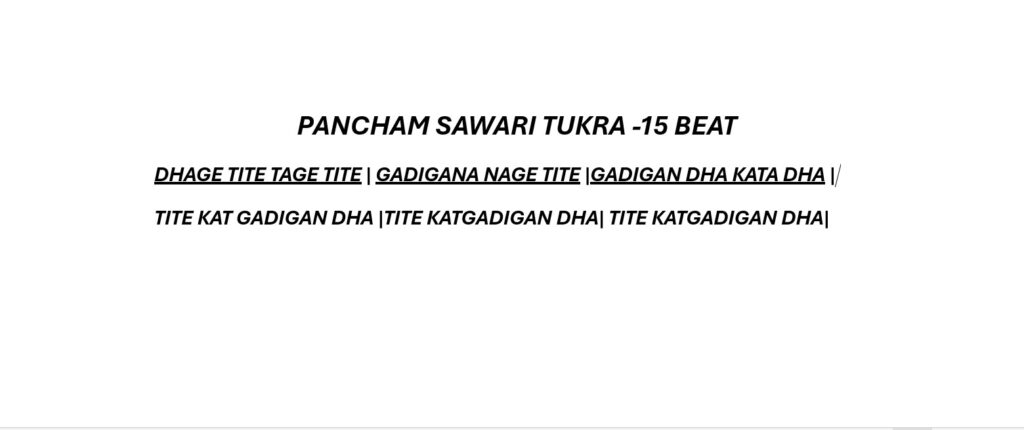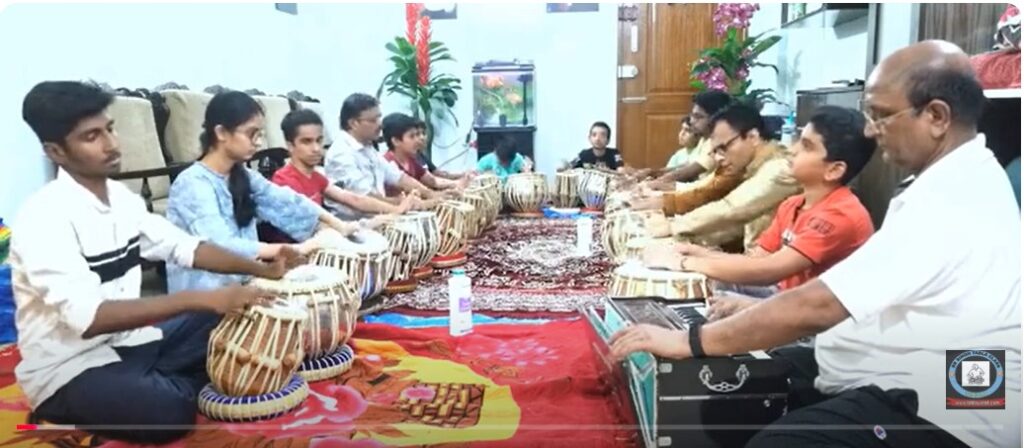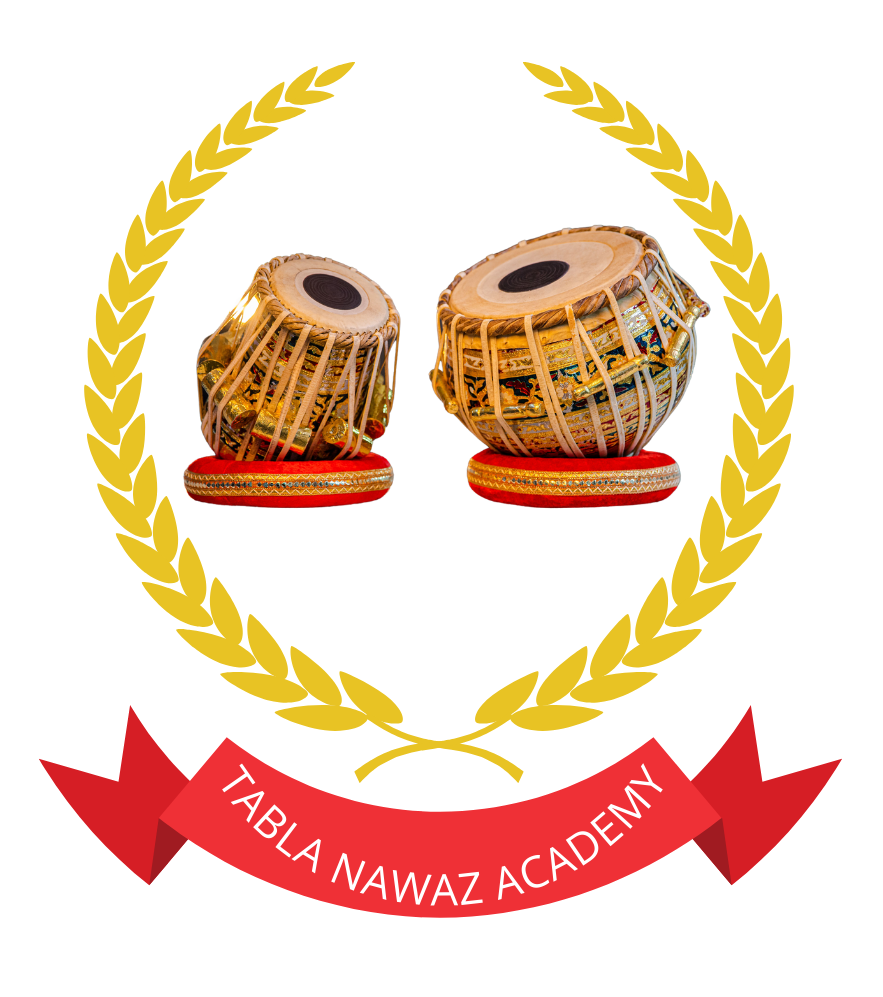Taal Tandav: Pancham Prarambh Tukra-15 Beat, Taal Tandav: Pancham Prarambh Tukra – A Journey in 15 Beats “When rhythm dances, time bows.” – An old Indian percussion proverb Welcome to a sonic storm of symmetry, speed, and spiritual precision — the Taal Tandav: Pancham Prarambh Tukra, an electrifying composition rooted in the majestic Pancham Sawari Taal (15-beat cycle). This tukra is not just a rhythmic flourish — it’s a statement of mastery, an invitation into the divine dance of rhythm.
🔱 What is Pancham Sawari?
The term Pancham Sawari literally means “the fifth ride” — a poetic name for a 15-beat rhythmic cycle used in Hindustani classical music. Structurally, it is divided asymmetrically: typically into 3 + 4 + 4 + 4 or 5 + 5 + 5, depending on the gharana or improvisational style.
Unlike more common time cycles like Teentaal (16 beats) or Ektaal (12 beats), Pancham Sawari is rare and often reserved for advanced performances due to its odd-beat tension and complexity. It challenges not just the performer, but also the listener, to recalibrate their sense of time.
⚡ What is a Tukra?

A Tukra is a short, powerful compositional phrase in tabla playing — traditionally played towards the end of a performance. It is structured, pre-composed, and rich in bol (syllable) combinations. The hallmark of a tukra is that it ends exactly on “sam” (the first beat of the taal) with dramatic precision.
The Taal Tandav tukra embodies this spirit but takes it even further — into a realm of dynamic footwork, bold naad (sound) architecture, and an aesthetic confrontation with rhythm itself.
🔥 Anatomy of “Taal Tandav: Pancham Prarambh Tukra”
The name itself is a clue:
- Taal Tandav evokes the ferocious cosmic dance of Lord Shiva, the destroyer and transformer — a metaphor for rhythm that shatters and reforms patterns.
- Pancham Prarambh means “the beginning in the fifth (beat)” — symbolizing the start of a journey through this 15-beat marvel.
Let’s break down what makes this tukra so compelling:
1. Asymmetry as Power
The tukra plays against the inherent asymmetry of Pancham Sawari. Its internal phrasing uses trikhand (three-part) or chatusra-based (4-note) divisions, creating a push-pull effect that adds dramatic momentum.
2. Advanced Bols (Syllables)
It includes phrases like:
nginxCopyEditDha – Tirkit – Dha Dha – Tun – Na – Kat – Ta – Dha – Ge – Na
These aren’t just notes — they are mini explosions, filled with tonal variation and placement precision.
3. Kaida-like Development in a Tukra Form
Though it’s a short piece, it may begin with a mukhda (lead phrase), develop into a middle section with phrase repetition, and finally crescendo into a samak (sam-landing phrase).
🎧 Listen to a Sample [Embed audio or video]
👉 [Insert embedded audio clip of a 15-beat tukra or a tabla solo in Pancham Sawari featuring this tukra.]
Want to feel the sam hit like thunder? Close your eyes and count:
Dha – Dhin – Dhin – Dha | Dha – Tin – Tin – Ta | Ta – Dhin – Dhin – Dha | Dha – Tin – Tin – Ta
…and BOOM! It returns to sam like lightning striking the same place twice.
🎵 Historical Inspiration
Though not as frequently played as other taals, Pancham Sawari has deep roots. It was favored by the Lucknow gharana for Kathak accompaniment and by great maestros like:
- Pt. Kishan Maharaj – Known for his playful mastery of odd time signatures.
- Ustad Ahmedjan Thirakwa – Whose renditions of rare taals like Pancham Sawari are legendary.
- Pt. Suresh Talwalkar – Who revitalized complex taals in contemporary tabla solo settings.
🌍 Global Relevance
Today, this tukra form and taal have made appearances in fusion music, jazz ensembles, and cross-cultural collaborations. The structure of the tukra lends itself to modern arrangements, especially with musicians like:
- Zakir Hussain (often experimenting with rare taals),
- Talvin Singh (electronic tabla fusion),
- Taufiq Qureshi (body percussion + tabla blend).
These artists have helped bring the ancient mathematics of rhythm into modern soundscapes.
🧠 Quick Quiz: Know Your Tukra!
Which of the following taals has 15 beats?
A. Teentaal
B. Jhaptaal
C. Pancham Sawari
D. Roopak
✅ Answer: C. Pancham Sawari
📊 Poll: What draws you most to complex tabla taals?
- 🔘 Their mathematical beauty
- 🔘 The challenge of listening and following
- 🔘 The energy in the compositions
- 🔘 The artistry of the performers
👉 [Cast your vote here!]
🎓 Learn the Tukra
Want to learn how to play this tukra?
📚 Recommended Tutorial:
🎥 [YouTube: Pancham Sawari Tukra Lesson – by Tabla Wizard]
🎧 [Spotify: Rhythms of India Vol. 3 – Track 7: Taal Tandav Tukra]
🌟 Final Thoughts
The Taal Tandav: Pancham Prarambh Tukra is a thrilling showcase of tabla artistry. In just a few seconds, it compresses years of discipline, memory, improvisation, and spiritual surrender. Whether you’re a student, listener, or fellow percussionist, this tukra challenges you to dance — intellectually and emotionally — with rhythm.
💬 Your Turn!
Have you heard a Tukra in 15 beats before? Do you know of other rare taals you’d like explored?
💬 Comment below or share your favorite tukra links with us!
Let the rhythm rule. Let the Tandav begin. 🥁🔥
https://www.youtube.com/@BhagawanSingh

